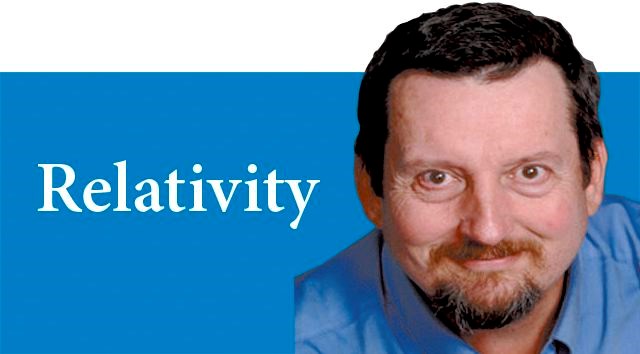Belief systems are interesting from a scientific perspective.
Why do we believe things? What should we believe? Where do beliefs come from?
The answer is "we don't really know" but we do know our beliefs are powerful. Indeed, science is based, to some extent, on a belief system. Scientists believe if certain actions are repeated over and over, the results will come out the same.
For example, what use would there be for a law of gravity if when you dropped your keys, you had no idea where they would go?
Imagine a world where dropping something might mean it would float off to outer space.
Or consider a world in which the chemical reactions involved in replicating DNA changed by the moment. You could end up with some awfully weird creations.
Science depends on repeatability.
This is why I always find it a little perplexing at this time of year to receive emails telling me Santa Claus doesn't exist. That he is scientifically impossible.
I would suggest the fact Christmas comes every year, millions or even billions of people believe, and there are presents under the Christmas tree would be sufficient evidence to satisfy even the Grinchiest of scientists. After all, isn't that repeatability?
Alas, for some, no.
There are always those who point out Santa Claus would never have enough time to travel around the whole world and visit every good boy and girl.
Their argument is invariably based on the notion nighttime averages 12 hours over the whole globe.
They say something like: "If he started at the stroke of midnight, follows the terminator around the world, and is done in time for Christmas, he would have 30 hours to deliver presents."
But that is three-dimensional Newtonian thinking. It completely ignores the other 23-dimensions of reality.
String theory tells us the universe is much more complex than we can know or see.
Certainly every bit of modern physics tells us time is just another dimension. And it can be manipulated in ways we cannot yet imagine. Of course, Santa Claus can.
So, time is not really the issue.
Santa has all the time he needs to deliver presents, eat cookies and drink a glass of ice cold milk, and move on to the next house.
Indeed, some quantum physicists believe Santa is capable of visiting every house in the world simultaneously at the stroke of midnight local time.
All he needs to do is collapse the wave function.
Other Grinchy scientists point out carrying presents for everyone would be darn near impossible given the masses and forces involved.
After all, if you consider the number of good children in world, then he would need to deliver 1,238,954,607 presents. That is a lot of presents.
If each weighed a mere kilogram then moving that mass would be near impossible. But near impossible isn't the same as actually impossible.
You might have heard of the Large Hadron Collider and the search for the Higgs Boson. This sub-atomic particle connects matter with the Higgs field which pervades the universe. The connection between the Higgs Boson and the Higgs field gives rise to mass.
If you want to move 1,238,954,607 kilograms of presents around, the simplest thing to do is to turn down the connection.
Without it, presents weigh nothing at all.
Indeed, without the Higgs Boson operating, eight reindeer could easily pull a sleigh filled with presents for everyone. They could also fly.
But how do you turn it off? You don't think that Rudolph's nose glows red by accident, do you?
Then there are the Grinchy old scientists who want to know where all of the presents come from in the first place.
Well, I could just say "the elves make them" but from what? The answer, of course, is from energy.
Energy and matter are interchangeable. Einstein proved that.
And where does Santa Claus get all of the energy to make all of the presents that he needs?
Simple. Where do you think all of the cookies and ice cold glasses of milk go?
If you really want to help Santa out, then you shouldn't leave out cookies. Rather, everyone should leave out the densest form of matter known to science: Christmas fruitcake.
One Christmas fruitcake has enough mass to meet the energy needs for thousands of presents.
Yes, despite what some Grinchy scientists might say, we all know at this time of year Santa does what he needs to do because without Santa, Christmas would simply not be the same.
Scientists may not know why people believe things, but we do know a child's belief in Santa Claus helps to make this time of year magic.
May the season bring you love, joy, happiness, and peace whatever your beliefs. Ho! Ho! Ho!



